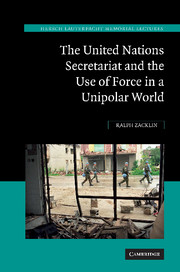Summary
The Iraq–Kuwait conflict had ushered in what was commonly believed, at the time, to be a new era in collective security. There seemed to be no limit to what could be achieved by the United Nations acting through the decisions of the Security Council. In 1991 while the Secretariat was fully engaged in the implementation of the various elements of resolution 687—disarmament, boundary demarcation, compensation, return of property—which in pre-1991 times would have been considered a prodigiously ambitious undertaking in itself, it was also setting up major peacekeeping operations in Cambodia and Western Sahara.
The establishment of the United Nations Protection Force (UNPROFOR)
It was during this same year that the then Socialist Federal Republic of Yugoslavia (SFRY) began to disintegrate, presenting the United Nations with one of its most difficult challenges. Croatia and Slovenia declared their independence on 25 June 1991. The formal involvement of the Security Council in this crisis can be traced to September 1991 when it decided to impose an arms embargo on deliveries of weapons and military equipment to Yugoslavia. The most serious fighting took place in Croatia, involving Croatian forces, the Yugoslav army and Croatian Serb militias. Following a cease-fire signed in Sarajevo on 2 January 1992, the parties accepted the Vance Plan concept for a United Nations peacekeeping operation in Yugoslavia and, on 15 February 1992, Boutros Boutros-Ghali, who had recently assumed office as Secretary-General, proposed to the Security Council the establishment of what came to be known as UNPROFOR to assist in the implementation of the Plan.
- Type
- Chapter
- Information
- The United Nations Secretariat and the Use of Force in a Unipolar WorldPower v. Principle, pp. 45 - 90Publisher: Cambridge University PressPrint publication year: 2010

